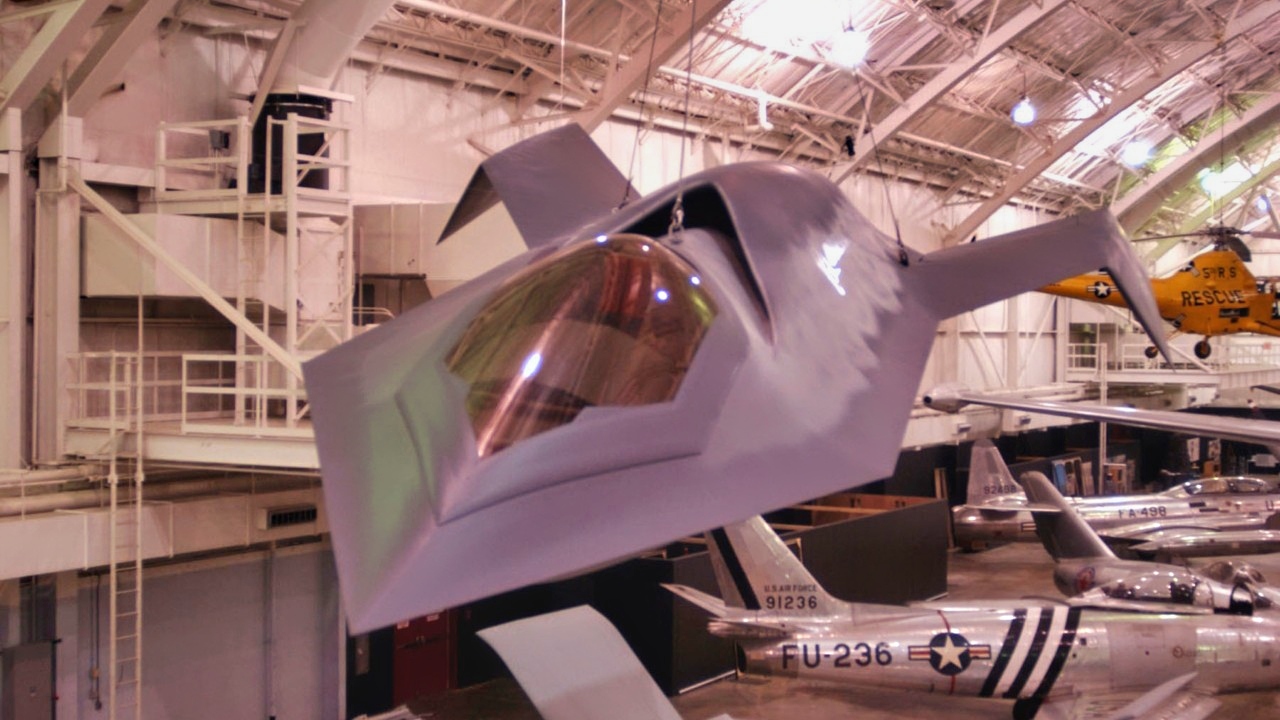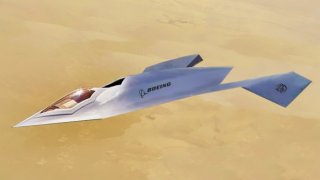Boeing's YF-118G Was a Stealth Fighter Like No Other
The YF-118G Bird of Prey indeed lifted a number of eyebrows in its day, and it remains as revered as its design was bizarre. Boeing wanted to leapfrog their competition, and the company was working on methods to design and create sophisticated stealth planes that were cheaper to build yet more advanced than those of their competitors.
With all the talk about unidentified aerial phenomena, or UAP, plaguing our skies, it seems harder for people to believe that an object buzzing the skies above a sensitive military installation is probably a next-generation military aircraft.
And when you look at an aircraft like the Boeing YF-118G – known as the “Bird of Prey” – you half expect to see a Klingon piloting the otherworldly vehicle, not a U.S. Air Force test pilot (let alone a pilot from the 1990s).
The YF-118G Bird of Prey indeed lifted a number of eyebrows in its day, and it remains as revered as its design was bizarre. Boeing wanted to leapfrog their competition, and the company was working on methods to design and create sophisticated stealth planes that were cheaper to build yet more advanced than those of their competitors.
Running from 1992 to 1999, with its first test flight in 1996 taking place at Area 51 – the source of many off-the-wall sightings of supposedly alien craft – the Bird of Prey was truly next-level technology. Boeing’s new concept plane did not handle very well. Its design was strange, and its 23-foot wingspan meant that it had poor flying quality.
The Point of the YF-118G Bird of Prey
Yet the point of the YF-118G was not to be the next great flying machine. The objective was to carry the military’s demand for reliable, next-generation stealth technology into the next century.
That is precisely what the YF-118G did, and it continues to be heralded by aviation enthusiasts and Air Force aficionados as a groundbreaking plane.
The Bird of Prey allowed Boeing to play with ideas incorporated in concept plane models such as the X-32 Joint Strike Fighter and the X-45A unmanned aerial vehicle concept plane.
In fact, the Bird of Prey looks most like the X-45A, which made its maiden unmanned flight in 2002. Boeing eventually donated the Bird of Prey prototype to the National Museum of the Air Force, because its design had become so thoroughly enmeshed into other Boeing aircraft that essentially, the secret was out.
The Bird of Prey incorporated next-generation stealth concepts, working faceted surfaces and radar-absorbing materials into the “skin” of the plane and featuring a reduced radar cross-section to make it harder for enemy radar to identify the bird as an enemy plane.
Because it was a prototype plane that was more of a proof-of-concept than a bird meant to be mass-produced and deployed into military service, Boeing cut some corners to keep costs down. Unlike the fifth-generation warplanes that were inspired by the Bird of Prey, there were no computer assist devices on the bird. Its landing gear is from civilian airplanes belonging to the Beech King Air and Queen Air models.
Listening to Jerry Goldsmith while Flying
The Bird of Prey had a maximum speed of 300 miles per hour and a ceiling of 20,000 miles. One Pratt & Whitney JT15D-5C Turbofan engine that could produce 3,190 pounds of thrust powered the experimental bird. While the warbird doesn’t have actual cloaking technology, as its Klingon sistership in the Star Trek franchise has, the exotic plane did take the stealth technology that the U.S. military had relied on for years to the next level.

There is no doubt that today’s F-35 Lighting II incorporated critical lessons learned from the YF-118G into its overall design.
Boeing’s Legacy
Boeing, a company that has become mired in controversy in the last few years because of some problems with its civil aviation department, nevertheless creates fantastic warplanes.
Even when those planes are not meant to become mass-produced replacements for pre-existing Air Force models, they can further the design and capabilities of next-generation airframes.
That is precisely what the YF-118G did.
And that is exactly why the Boeing Bird of Prey retains such a hallowed place in the annals of U.S. military flight.
Brandon J. Weichert, a National Interest national security analyst, is a former Congressional staffer and geopolitical analyst who is a contributor at The Washington Times, the Asia Times, and The-Pipeline. He is the author of Winning Space: How America Remains a Superpower, Biohacked: China’s Race to Control Life, and The Shadow War: Iran’s Quest for Supremacy. His next book, A Disaster of Our Own Making: How the West Lost Ukraine, is due October 22 from Encounter Books. Weichert can be followed via Twitter @WeTheBrandon.


